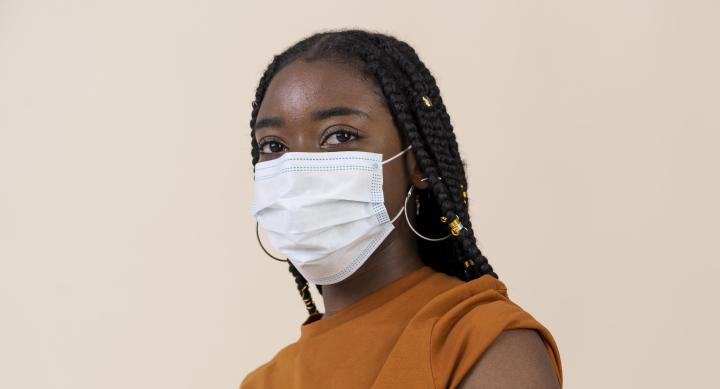
Take the Shot: Exploring Vaccine Promotion Messaging
August 2020
The Think Tank is a multi-disciplinary health communication collective with experience and subject-matter expertise to consult on real world communication issues in practice. Every month, we select submissions from health professional stakeholders and explore their patient-clinician and inter-professional challenges. Through Think Tank questionnaires and discussion deep dives, our collective of scholars and health professionals offer practical recommendations, share educational materials, and craft messages that stakeholders can implement in practice immediately. Bringing innovative ideas to practice at an accelerated pace, the Think Tank aims to unpack complex conversations and distill effective and structurally competent applications of “what you might say” and “what you could do.”
Promoting the Upcoming Flu Vaccine and Addressing Patient Uncertainty
This month, we tackled the topic of managing uncertainty about the future COVID-19 vaccine and promoting the upcoming flu vaccine amidst the pandemic. The following post captures the recommendations that the Think Tank shared during our in-person deep dive discussion in July and a follow up list serv circulation.
We posed the following question to the Think Tank:
“What are some ideas for promoting the flu vaccine for this upcoming cycle that could be applied to the eventual promotion of a COVID-19 vaccine?”
Awareness of Accessibility Barriers and Recommendations
Think Tank members brought up how community-based infrastructure must be built to not only promote the flu vaccine in culturally relevant ways, but also to ensure that getting the vaccine is easy and safe. Cultural translators, like community health workers who are connected to high density at-risk neighborhoods could facilitate promoting the vaccine. Offering the flu vaccine in places other than medical facilities – outdoor areas, mobile vaccination hubs, or via home health or Meals on Wheels programs were also suggested. One Think Tanker imagined socially distanced flu shot/voting poll hybrid stations across Austin. Coordinating collaborative action to increase access to the flu vaccine is needed, and establishing such partnerships could provide a roadmap for the future COVID vaccine.
Cognitive Bias and Managing Uncertainty
As far as patient uncertainty, Think Tank members shared that cognitive bias and fear of side effects are major impediments to vaccine uptake. A common bias is that the flu vaccine will cause people to get the flu or flu-like symptoms, even among people working in science-based health professions. Many nurses and physicians decline the influenza vaccination each year. Other less common, but growing concerns patients share are that the vaccine can injure them.
To counter uncertainty about the flu vaccine and eventual COVID vaccine, Think Tank members highlighted the importance of establishing trust, providing accessible and factual information, and acknowledging potential known side effects.
One member shared, “People have become much more interested in the science of viruses lately - there could be some interesting visual articles written on, for example, what the H's and N's mean, or how pandemic flu is different from seasonal flu; Regular death rates from flu, complications, age ranges most often affected, etc…Keep it informative and science-focused without being too scary…I've seen a lot of traction on thoroughly-designed social distancing articles, like this one from Reuters.”
As more information becomes available about COVID-19 and vaccine development, these conversations will be more and more common. However, more information does not always mean more certainty for patients. Comforting patients by managing uncertainty with probability can help. Dr. David Ring shares that, “The chances of lasting harm [from the vaccine] are vanishing low and the chances of individual or societal benefit are high,” so framing the vaccine in terms of what there is to gain can be effective. Discussion of side effects should be carefully approached, Dr. Ring mentions, because of the nocebo effect. He described that, “if I say, ‘you can get the symptom of X from this,’ then I actually increase the chances a person will experience that symptom.” To manage this, Dr. Ring recommends that one should, “avoid absolutes and focus on the balance of potential harms and potential benefits. Our brains tend to focus on unlikely but emotionally compelling statistics and ignore the boring ones that are more representative.” Being aware of patients’ emotional responses and listening to and addressing their concerns can bolster their trust and openness.
This CHC Think Tank Guide is our first on communicating about COVID-19 – as more questions are brought to us about health communication during the pandemic, we will compose more posts summarizing our recommendations from our collective of scholars and practitioners.

